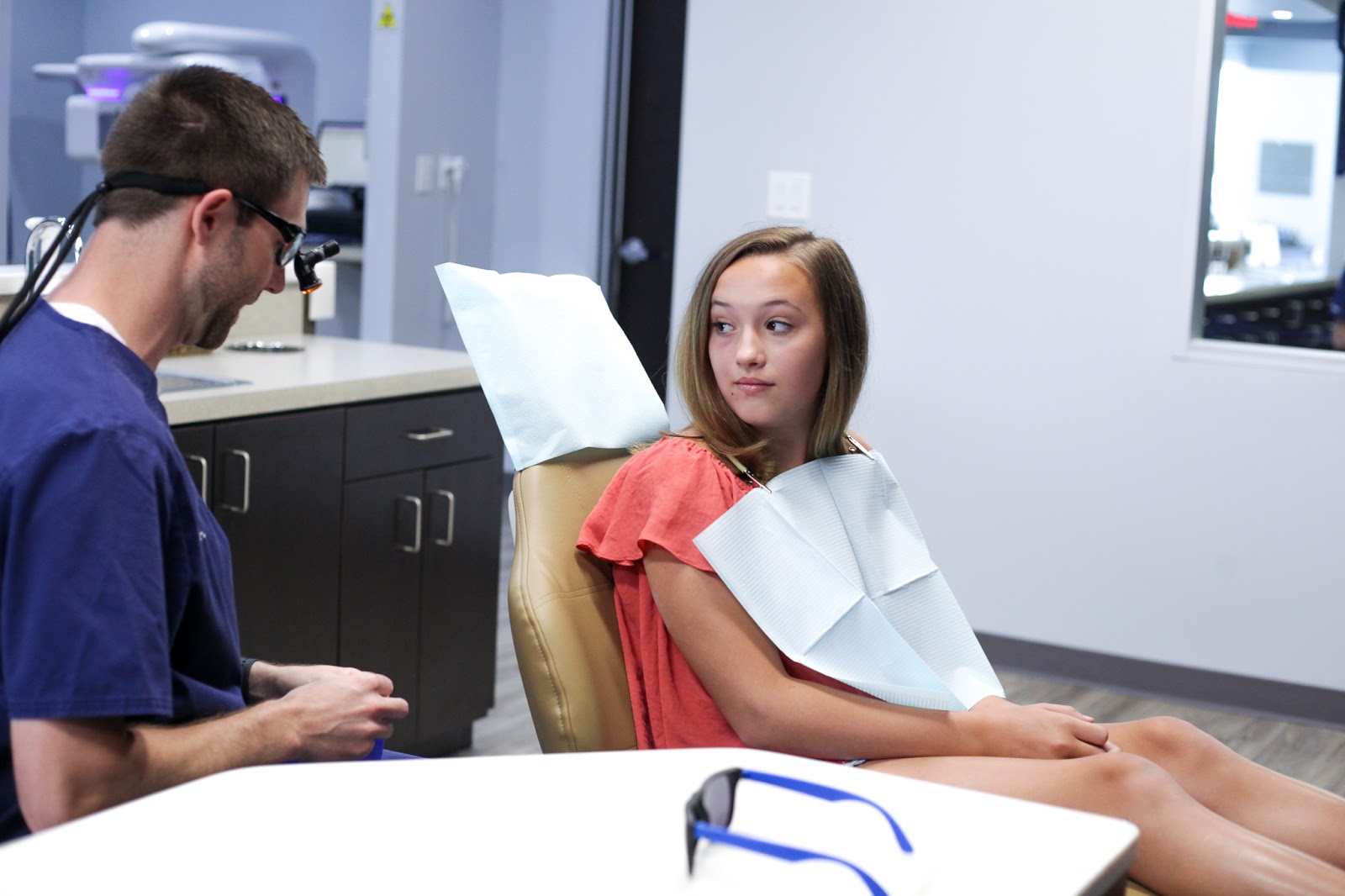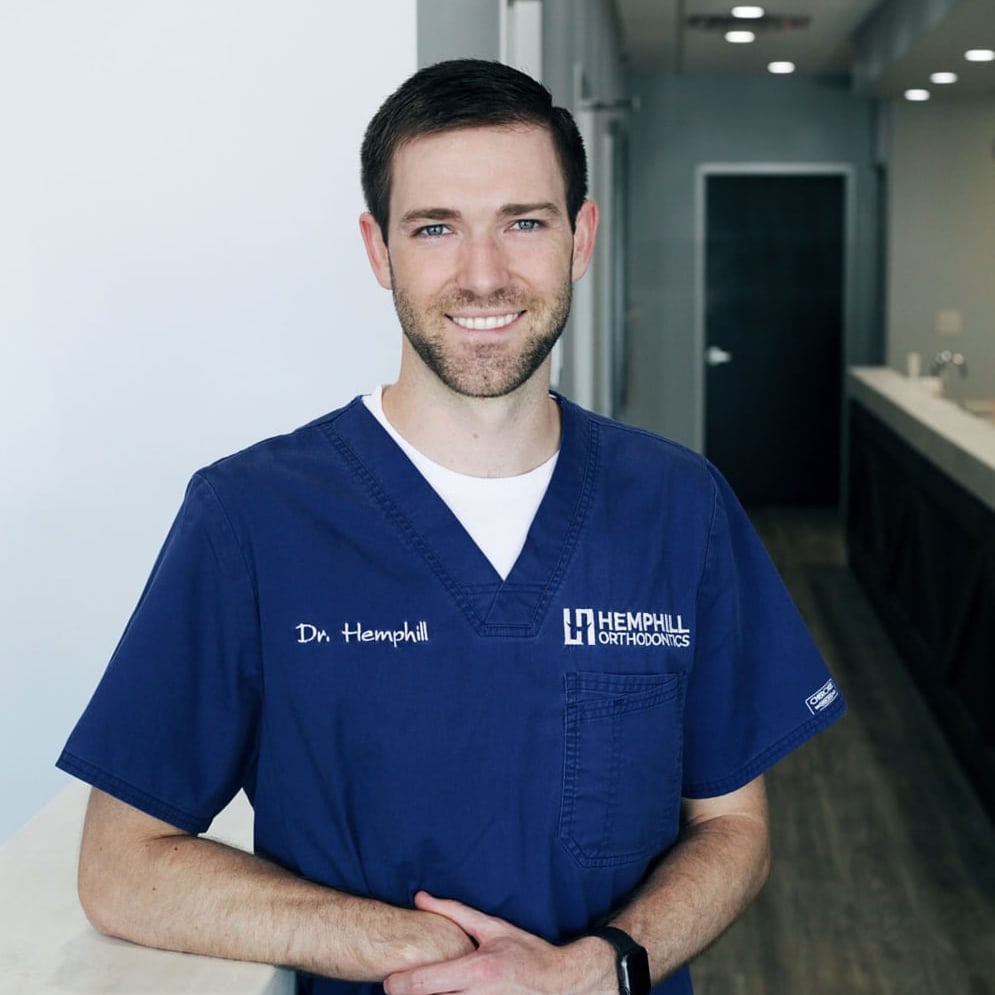Here at Hemphill Orthodontics, we want you to feel informed and empowered from your first visit with us to the last. We know that choosing to improve your oral health with orthodontic treatment is a big decision, and since you only get one smile, you shouldn’t trust it to anyone other than an experienced orthodontist! But what if you’re not sure how to go about finding one?
To help get you started on your orthodontic journey, our talented team has put together this list of important questions to ask any orthodontist you’re considering, in order to make an informed decision on your care. Let’s take a closer look at what you should know before committing to a particular practice!
Is the doctor a trained orthodontic specialist?
This is actually the most important question you can ask when exploring treatment with braces or clear aligners. That’s because some general dentists are also able to provide orthodontic treatment, even though they don’t specialize in it.
A general dentist will offer common dental services like crowns, fillings, dentures, and occasional orthodontic treatment like Invisalign. An orthodontist, on the other hand, spends their days providing only orthodontic services.
This distinction is pretty important. For instance, imagine that you or your child required specialized treatment or surgery. Would you feel comfortable with your family physician handling your case, or would you prefer a dedicated specialist?
Orthodontists are essentially dentists who also have several years of additional specialized training and experience. This means an orthodontist has:
- studied the growth and maturation of the teeth and jaws
- been introduced to thousands of case studies
- Researched all the latest advancement in technology and methods
- developed extensive diagnostic skills
- learned biomechanical techniques to properly move teeth
- studied how to change the development of the dental alveolar complex and facial growth of younger patients
To give you an idea of how competitive orthodontic residency programs are, they only accept the top students in any dental school graduating class! These orthodontic programs last 2-3 years, and include full-time training that focuses on correcting orthodontic issues with braces and aligners. While there are exceptions to every rule, most dentists won’t possess this same level of exhaustive orthodontic training and experience.
Dr. Blake Hemphill earned a bachelor’s in Spanish from Harding University, where he played tennis as an Intercollegiate Tennis Association Scholar. He then attended Texas A&M University Baylor College of Dentistry and graduated with a Doctor of Dental Surgery. To top it all off, he graduated as the class VALEDICTORIAN from Saint Louis University’s Center for Advanced Dental Education with a Certificate of Orthodontics and a Master of Science in Orthodontics.
Dr. Hemphill is a member of the American Association of Orthodontists, and has received the following awards, distinctions, and recognitions:
- Odontological Honor Society
- Omicron Kappa Upsilon Honor Dental Society
- Cumulative Dean’s Honor List at Baylor College of Dentistry
- American Association of Oral Biologists Award
- American Academy of Oral Medicine Award
What treatment options does the orthodontist offer?
Hemphill Orthodontics has a wide variety of treatment options available to patients of all ages in Celina and the surrounding communities.
Metal braces
Traditional metal braces are still the most widely used orthodontic appliance, and have come a long way in recent years! They are typically made of a mix of high-grade stainless steel, nickel, and other durable metals. Bands that wrap around the back molars are sometimes used, and smaller metal brackets are cemented to the front surfaces of the other teeth. There is also a thin, springy metal wire that connects the braces, tied into the brackets by colorful elastics, metal ties, or another type of clasp. All of these components come together to gently guide your teeth into the desired positions over time.
Clear braces
Sometimes called ceramic braces, these function in the same way metal braces do, but are made of clear materials instead of stainless steel. Because they are less visible than traditional braces, they’re popular with older teens and adult patients who may be more image-conscious and looking for a more esthetic treatment option. They are larger and more brittle than their metal counterparts, so we tend to use them on the upper front teeth more often than the lower teeth.
Invisalign
The Invisalign system is made up of a series of customized aligners that are nearly invisible and completely removable. Unlike traditional braces, no brackets and wires are needed to move the teeth! This offers patients a measure of freedom and flexibility that traditional braces just can’t beat. Designed to fit snugly but comfortably over your own teeth, Invisalign provides a more subtle and comfortable orthodontic experience. When worn the recommended 20-22 hours per day, and changed out weekly to progress in the series, these aligners will gradually move your teeth into proper position.
Invisalign Teen
Although Invisalign and Invisalign Teen work the same way when it comes to the underlying technology, Invisalign Teen was developed with the unique needs of teen patients in mind. There are a few special features that are specific to the Invisalign Teen system, including the following:
Compliance indicators
To help teens stick to their treatment plan, Invisalign Teen has a compliance indicator incorporated into each aligner. This will fade from blue to clear as it is used, providing a visual approximation of wear. This lets patients, parents, and orthodontists keep track of patient use. If a teen is skipping out on hours, it will be noticeable in enough time for us to correct compliance, thus keeping the overall process moving along at the right pace.
Eruption tabs
This feature accommodates the growth of the second molars in young adults, helping to keep space open for unerupted teeth and making it possible to treat a wider range of conditions with Invisalign.
Replacement aligners
We all lose or damage things from time to time. While we encourage all of our Invisalign patients to be careful with their aligners, teens don’t need to worry about misplacing or losing one. Invisalign Teen anticipates it happening, and provides up to six replacement aligners at no charge, just in case!
How frequent are follow-up visits with the orthodontist?
Whatever treatment option you choose with Dr. Hemphilll, you should expect regular monitoring visits to our Celina office. For most patients, adjustment appointments will be scheduled every 4-8 weeks or so. During these visits, Dr. Hemphill will replace any worn-out rubber bands, check the progress your teeth are making, and make adjustments to the appliances to ensure that the teeth are moving in the right direction. Invisalign patients may come in less often, but these appointments are still an essential part of the orthodontic process, so you don’t want to miss them!
Depending on case difficulty, treatment time varies greatly, ranging anywhere from 6-36 months. Regardless of your total estimated time, you’ll be seeing us often throughout your orthodontic journey! We know how busy today’s families are, so we never overbook patients and always aim to see you at your scheduled time.
Don’t trust your smile to anything less than the best!
If you’re looking for the best in high-quality orthodontic care, Dr. Hemphill has the education, skills, and expertise necessary to create a beautiful smile with long-lasting results. If you’re ready to take the first step in your orthodontic journey, we would love to meet you and talk more about how we can help you achieve the smile you desire. There’s never been a better time to take the first step towards improved oral health, so get in touch today to schedule your FREE consultation with Dr. Hemphill!
 972-636-4175
Free Consult
972-636-4175
Free Consult



 Dr. Hemphill
Dr. Hemphill